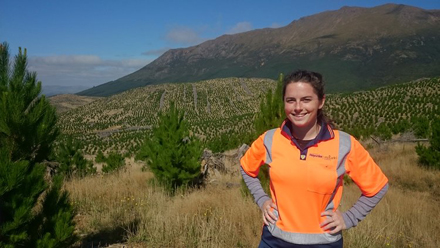
New Zealand has deepened the environmental role of forestry as part of its $NZ480 million, 10-year plan to plant one billion new trees by 2028. The Minister for Forests, Shane Jones, said NZ had now included permanent forests as part of changes to its Emissions Trading Scheme (ETS) shortly before Christmas. Source: Philip Hopkins for Timberbiz
“This will provide more incentives for landowners to integrate trees into their landscapes, enabling them to diversity their income while also providing long-term environmental benefits,” he said.
NZ’s encouragement of farmers planning trees is a model for Australia’s $20 million forestry plan, announced late last year, which emphasis the importance of farm forestry.
However, the chairman of the Australian Forest Products Association, Greg McCormack, has criticised the Australian plan as amounting to only two cents per tree.
“This is a good start, but clearly there needs to be other support to meet the target,” Mr McCormack said.
Mr Jones addressed an Australian forestry conference last year where he outlined NZ’s forestry plan, which he described as a practical way to meet the cost of climate change transition.
“We are increase the size of the ‘lung’ to sequester and absorb carbon and meet international climate obligations,” he said.
NZ has allocated $NZ480 million for the One Billion Trees Program, allocated from its Provincial Growth Fund. The fund includes:
*$NZ25.8m for partnership projects through the PGF.
*$NZ50.8m for Crown Forestry Joint Ventures.
*$NZ34m set aside for the Hill Country Erosion Program.
*$NZ120m is now available for partnership projects.
*$NZ118 million is now available for direct grants to landowners planting trees.
Depending on the type of planting and with an upper limit of 300 hectares, the base rate for grants can range from $NZ1000 per hectare to $NZ4000 per hectare. Grant applications can be made all year round.
Grant categories include indigenous (a mixture of native trees and shrubs); Manuka/Kanuka (erosion control or a nurse crop for an indigenous forest); indigenous natural regeneration (retiring land and managing it to naturally return back to trees); and exotic (planting eucalypts, redwoods or pinus radiata to stabilise erosion-prone land).
About 60 million new trees were planted last year through direct government investment and commercial forestry activity.
The annual planting rate is expected to rise to 100 million per year in 2020.
Mr Jones said the tree plan was a huge opportunity to revitalise the country’s regions, particularly allowing Maoris to realise the potential of their land.
It would also support planting to reduce erosion, improve water quality, enhance biodiversity and diversify productive land use.
Mr Jones said the changes to allow permanent forests, with indigenous or exotic species, would allow land owners to better optimise their non-productive agricultural land and enjoy income from the sale of NZ units.
“We have also consulted on a new accounting option for post-1989 forests in the ETS, known as averaging,” he said. Cabinet would consider this and other improvements early in the new year, he said.
A new permanent post-1989 forestry activity within the ETS will replace the current Permanent Forestry Sink Initiative (PFSI).
Under current rules, it is not possible to enter a post-1989 forest as a permanent forest in the ETS, even if it will never be harvested.
Mr Jones said changes would not come into effect until the amendments to the Climate Change Response Act 2002 went through Parliament. Participants in the PFSI would be able to convert to the new category, he said.
“The operational improvements will remove barriers to participation and compliance. Changes to offsetting and tree weed provisions will increase land-use flexibility while ensuring that the ETS supports afforestation and discourages deforestation,” he said.





